-
Posts
19,732 -
Joined
-
Days Won
1,566
Content Type
Forums
Detector Prospector Home
Detector Database
Downloads
Posts posted by Steve Herschbach
-
-
Hi Hound,
About all I can attempt to do is lay out capabilities and options. But for each of us at some point we have to weigh those options for ourselves because you can argue it back and forth all day long. In particular, two people facing exactly your same circumstances may come to exactly opposite conclusions as to which course of action is best for them. You can find opinions to support any decision that internally you have probably already made for yourself.
I am pretty good at pointing out the fork in the road but you have to decide which fork to take!
It really like many things in life comes down to a money thing. If you can afford to spend 10K to just find out and afford to take a $1000 hit on immediate resale at a loss if it does not work out then no problem. Some people can get something like a GPZ, go find an ounce of gold with it, and then sell it, with the ounce covering the cost of the experiment. No big deal.
Other people it is much more a stretch financially and all I can say about that is far better to wait then rush into things. There is time to see how it all shakes out and the very good possibility of picking up a lightly used unit with transferable warranty at discount.
-
I can answer the GPS thing. The information on the unit goes nowhere. Unless you dump it to a PC. Then it is on your PC. It still goes nowhere by design but all PCs can be hacked.
If you use a handheld GPS and dump to PC, same problem. It is not a GPS or GPZ issue, it is a PC issue. One solution would be to never dump to your PC or to use a PC that never accesses the internet. If you worry about stuff like that be sure and never use your PC for online banking, any online purchases, or to store any personal information of any sort.
The GPZ actually only holds a limited amount of information that must be erased or dumped regularly so it is not like years of data can be had even if your GPZ is stolen.
The easy fix is to leave the GPS turned off, which it is by default. I on the other hand will be using mine to the max as it is a very useful function for my prospecting efforts and one that with a modicum of care should have no security issues beyond whatever you face already with your home computer.
If anyone on this forum is snotty with anyone PM me. If it happened here Scott I missed it and I apologize.
-
Good point, and good idea about a tracker. I am going to check with my insurance company this coming week about issues regarding my new GPZ and what coverage I have available. I will report back.
Not a unit to leave sitting unattended for sure, but that applies to many things in life.
-
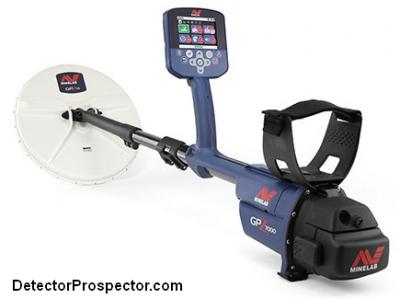
Minelab GPZ 7000 metal detectorAre you tired of it yet? All the Minelab GPZ 7000 posts? The implication that what you have is no longer the best?
The following is from a post I made February 24th at http://www.detectorprospector.com/forum/topic/686-minelab-sdc-2300-vs-gpz-7000/?p=5883
The thing I am always trying to convey is no one detector is best for all people under all circumstances. Life does not work that way. If it did there would be one model of car and we all would drive it. Just because the GPZ 7000 came out all other gold detectors did not become obsolete. I think it is 80% operator and 20% detector and that is probably giving the detector too much credit.
As things stand right now the GPZ 7000 has some areas that would make a person consider other detectors:
1. The price
2. The weight
3. The lack of small coil option
4. The lack of large coil option
5. Lack of discrimination
Until we get the GPZ 10000 at 3 lbs for $1000 with full discrimination and full range of inexpensive coil options there will be plenty of room for alternatives.
I will be amazed if there are not a good number of people who have a Minelab GPX 5000 or earlier model that prefer to just stick with what they have. Anything otherwise would not be normal. The main reason this would make sense is that a. They already own them and b. They are not only comfortable with the machine but quite expert with it.
There is a great deal that can be said about becoming expert in the use of a particular detector and then just sticking with it. Switching detectors constantly can be a bad idea in that you can never really become "one with the machine". There are many, many expert detectorists out there using older model detectors that can run circles around people using the latest and greatest.
I bet Ray Mills can find more gold with a $499 Gold Bug than most people could find with a GPZ 7000. I am saying that to puff Ray up, but to put a real point on what I said above about this detecting thing being far more about the operator than the detector. It is not that good detectors excel, it is that good detectorists excel. The majority of people who buy metal detectors never fully learn how to operate them, and never fully commit themselves to getting out and using them regularly. Ray knows the Gold Bugs inside and out, and uses them almost daily.
So you have a GPX 5000 (for example) which you know inside and out, and you have a full set of coils and other accessories. You have that setup dialed to perfection. Do you need a GPZ 7000?
Of course not. Honestly, that is just silly. The GPX 5000 in my opinion at this time still represents the best value in pulse induction prospecting detectors. The model has a solid history as a performer and nothing has changed overnight. In fact right now, a person can buy a used GPX 5000 with remaining transferable factory warranty in like new condition for as little as around $3000. I know this because that is what I recently sold my like new GPX 5000 with remaining warranty for! That is a smoking good deal, great value proposition. Even brand new full warranty from a dealer a few phone calls will get you a GPX 5000 for half the cost of a GPZ 7000. The point being 10K is a whole lot of money, and other viable alternatives exist for a lot less money, all the way down to that $499 Gold Bug.
The coil thing is a biggie. Right now the only coil for the GPZ 7000 is the one that comes on it. A three pound 14" x 13" coil. Even though I have decided to jump in with both feet with the GPZ 7000, I have felt compelled to have a couple other detectors available, to address this lack of accessory coils. Small coils are a real necessity for me to work in very uneven ground that has crevices and depressions a larger coil can't get into. A mono coil in particular with its superb on edge sensitivity can be a real boon for working in thick brush, trees, or cactus. The edge of the coil gets the detection area right up against the base of a tree trunk or rock, something that will be difficult if not impossible with the GPZ 14 coil with its unique DOD winding configuration. My answer to this problem has been to hang on to my SDC 2300 with its hard wired 8" mono coil.
When people think big coils they tend to think depth, but I am not worried about that with the GPZ 7000. What concerns me is ground coverage. When I stand on one side of a huge area in northern Nevada and want to scan it all I need a large coil. It is all about getting over the target - extra depth if any is secondary. Since I did decide to sell my GPX 5000 with large coils, I have to say I only did so by having an insurance policy in the form of my Garrett ATX. The ATX is indispensable for me as a water hunting unit, the best I have ever used for my own particular needs. It also is a capable prospecting machine, and so I was only able to justify selling my 5000 by getting a 20" x 15" mono coil for the ATX.
I really do intend to seek out areas where the GPZ will do what it does best. But inevitably I am going to run into areas in the Sierras where I need a small coil, and in Nevada where I need a big coil. There will come a time when the GPZ offers those coil options (at a cost!) and the issue will be alleviated to a large degree. For now however I am plugging the holes with two other detectors, and a person with a GPX 5000 and a coil selection may want to possibly hang onto it, at least until the GPZ coil options become available. No matter what though I do not see the GPZ as ever coming remotely close to the GP series when it comes to having over 100 available accessory coils. I do not expect GPZ coils to be cheap, and it will greatly limit how many coils a person will be willing to invest in. That in turn will limit the number of coils made for the machine to just the few that have a very good chance of selling.
The weight. It is just a joke with me now. I want detectors to get lighter but prospecting PI detectors keep getting heavier. Oddly enough I see comments about the GPZ being nose heavy, when it is actually perfectly balanced if the rod is kept at the proper length for operator height. However, I see that most people want to swing that coil in a wide arc and so they run the coil out longer than good ergonomics calls for, and that is going to hurt. There are solutions with harnesses and bungees, etc. but nothing changes the fact the GPZ weighs over seven pounds. That alone could be a show stopper for physically challenged people, especially in uneven terrain that requires more than just pushing the detector around on a bungee.
Obscure stuff. The GPZ audio is not as lively as the SDC 2300 audio, but it is livelier than the GPX audio which reached levels of smoothness that put many VLF detectors to shame. The GPZ audio can be smoothed, but to get best performance you have to go back to getting used to a sparky threshold. Some people will just not like this. It is a regular comment with the SDC 2300, and I expect it to be also with the GPZ though to a lesser degree.
The display? It is absurdly faint given the price of the detector. The CTX display was not state of the art when it came out, and for Minelab not use something better in the GPZ is annoying. Honestly, that is all it is, an annoyance, but it is real. If I want to make adjustments in the field most of the time now I automatically just stop and turn until I can see the screen clearly instead of trying to make out the barely visible screen. Luckily once things are set there is little need to do more than turn the detector off or on. The problem is I really, really like the built in GPS and mapping capability myself, but the inability to see it clearly at all times takes the shine off the system.
Another minor niggle. The coil feels and sounds like a hollow drum on the end of the rod. Not too bad when using good headphones, but quite loud if you let it ride on the ground, as I often like to do because of the weight. I like being able to use an external speaker, but then that coil bangs away loud and clear.
These last few things may seem like I am being picky, but I am trying to call out some issues that some people coming from a GPX series will notice and may not like.
Finally, the discrimination. I never trusted the Minelab PI series discrimination and never used it so I do not miss it. But for some people they are having what they feel to be reliable results with the GPX discrimination and the lack of it on the GPZ could again be a real show stopper.
My genuine intent here is not to trash the GPZ 7000, but to show why the GPX 5000 and its kin are still machines to be considered, and in many cases may be the better alternative for people for the reasons listed above, and probably others I may have missed. Some people flat out will not like the GPZ because it is not what they are used to. I truly believe the GPZ represents the future and that it has real performance advantages, but I also truly believe that people using other detector models can do every bit as well with those detectors as with a GPZ. It is all about being a good prospector and applying whatever tools you have at your disposal to best effect. If getting gold was the only measure we may as well throw dredges, highbankers, and excavators into the mix as to what may or may not put the most gold in a prospectors pocket. The GPZ is just that, another tool for your consideration. But not the be all and end all of all tools.
One last note. I made this post with a purpose. I am afraid people believe critical thinking is not allowed on this forum. That is 100% not the case. What I do not like is product and company bashing, especially from people that do not even have the product. You notice how I could be critical and point out issues with the GPZ without going on a tirade about Minelab? As if they have some evil intent? The reality is the people there have worked very, very hard, and invested a lot of money, in producing the best detector that they could at this point in time. Nothing is perfect, and it has shortcomings, but it was not from lack of trying. There are a great many problems to be overcome and compromises to be made when designing a detector like this. Not everyone will be happy, and there is no need for everyone to be happy, with the GPZ. If you do not like the detector or something about it than I encourage free discussion of these things. But please, just stick to the facts and state what does or does not work for you. Thank you! -
My main plan this year is to put as many hours as possible on the GPZ 7000. That is definitely job one starting in April. I also will be using the Garrett ATX for in water beach detecting. The ATX will also be used with the 20" coil as an alternative to the GPZ in areas where I want more ground coverage than the GPZ 14 coil provides.
For hunting gold nuggets or coins in trashy locations I will be leaning on the Nokta FORS Gold and for in town jewelry detecting my White's V3i/Big Foot combo. For 2015 however it does look like the GPZ and ATX will be doing the heavy lifting.
What about you? What detector or detectors will you be counting on most for 2015?
-
Welcome to the forum Rick. I am a big fan of finding precious metal in any form wherever they can be found. I am looking forward to hearing about your adventures!
-
Geology of Lode Gold Districts in the Klamath Mountains, California and Oregon
By PRESTON E. HOTZ
GEOLOGICAL SURVEY BULLETIN 1290
page 29:
POCKET DEPOSITSAn uncertain but probably considerable amount of gold produced from lodes in the Klamath Mountains was taken from small localized concentrations near the surface which are commonly referred to as pocket deposits. Southwestern Oregon, especially, is considered by prospectors and miners to be pocket country. The genesis of these gold pockets is poorly understood.
Gold pockets are small, shallow, relatively high grade deposits of free gold with little gangue. They apparently have little or no lateral or vertical continuity, because little effort was made to explore possible continuations of a pocket once the rich, easily attained gold had been extracted.
In the southeastern Klamath Mountains Hershey (1910) and Ferguson (1914, p. 40-43) described pocket deposits in the Minersville and Whiskeytown districts that occurred at the contact between slate of the Bragdon Formation and the Copley Greenstone, or at an interface between slate and a dike of diorite porphyry. Veinlets of manganiferous quartz and calcite accompany the gold, which is described as occurring in thin sheets in some places. At three localities the Eldorado, Mad Mule, and Five Pines mines the pockets are sufficiently large and close together to have warranted rather extensive work along the contact; all the workings are within a few hundred feet of the surface. Most commonly, however, pocket deposits have been mined for only a few feet below the surface and abandoned after the obvious gold had been exhausted; most of the pockets in southwest Oregon were seldom mined to depths of more than 25 feet (Diller, 1914). The yield from individual pockets in the Minersville and Whiskeytown districts was from $2,500 to as much as $45,000 (Ferguson, 1914, p. 56, 74). The most famous pocket mine in southwest Oregon was the Gold Hill pocket, which yielded approximately $700,000 worth of gold within a depth of 15 feet (Diller, 1914, p. 45-56). Many other pockets have been mined in the Klamath Mountains from which gold worth a few hundred to several thousands of dollars was extracted before pockets were exhausted and forgotten.
Hershey (1910) concluded that the pocket gold was deposited by gold-bearing meteoric water. He postulated that the gold was dissolved from weathered auriferous pyrite and precipitated by reaction of the solution with carbon in slate of the Bragdon Formation. Ferguson (1914, p. 41-43; 1915) also subscribed to a theory of supergene origin with precipitation being caused by carbon in the black slates. He suggested, however, that acid waters dissolved gold from low grade manganiferous quartz veins in metavolcanic rocks through the agency of manganese dioxide. After traveling in solution a short distance, the gold was deposited in irregularities along slate-metavolcanic rock contacts where small calcite lenses neutralized the solutions.
Studies by Krauskopf (1951) and Cloke and Kelly (1964) support Hershey's and Ferguson's hypotheses. These studies indicate that acid meteoric waters containing Cl~ and Mn02 can dissolve and transport gold. In the presence of H+ the Mn02 oxidizes the gold, which then combines with Cl~ according to the reaction:
2Au + 12H- + 3Mn02 + 8C1~ = 3Mn++ + 2AuCl4 - + 6H2O (Krauskopf, 1951, p. 862).
Supergene processes may have been responsible for the formation of some of the pocket deposits, but it seems unlikely that the exceedingly rich Gold Hill and Steamboat pockets in Oregon were formed this way. Under certain conditions, where gold precipitation takes place in response to hydrothermal alteration of country rock by veinforming solutions, it is expectable that rich zones or pockets would occur in conjunction with lean or barren zones (Helgeson and Garrels, 1968). It is also unlikely that gold would be transported a very great distance before neutralization of the solutions would cause precipitation; hence, supergene deposits probably are not far from the original hypogene deposits. The presence of carbonaceous sedimentary rocks may not be necessary to the formation of pocket deposits, because in southwest Oregon gold pockets also occur in areas where there are no carbonaceous rocks (Wells and others, 1949, p. 21). Probably many pocket deposits are irregular and discontinuous shoots along hypogene veins and veinlets which have been enriched by supergene processes. -
-
You have to call around. Minimum Advertised Price (MAP) governs what you see on the Internet.
-
Oops, you caught me out being wrong! White and Minelab do indeed both have online "full pop" shopping carts. I actually knew about but also forgot about that. I can't think of any good reason to buy direct from them but it is an option I suppose. I edited my original response. Thanks!
-
My only real advice is that if you stick with a First Texas (Bounty Hunter, Fisher Teknetics), Garrett, Minelab, Tesoro, or White's detector under $300 you are assured of getting a competitive model with good backup and support. That price range is saturated with units that all perform within a hair of each other. Main thing is stick with mainline manufacturers and you can't go wrong. Everyone has their favorites.
-
You have many dealer options to choose from. A few are listed at http://www.detectorprospector.com/gold-prospecting-links/link-trades-page.htm
Edit - some manufacturers do sell direct at full retail MSRP pus shipping. -
Gain and Senstivity are the same thing on most metal detectors. What is usually meant is Recieve gain or sensitivity. Some detectors also let you adjust the Transmit Gain or power. I personally think in terms of receiver sensitivity and transmitter gain myself. Unless the person says otherwise however gain and sensitivity tend to be used interchangeably to refer to receiver sensitivity.
On the GPZ when you adjust the mode you are adjusting the transmit side of things and sensitivity the receive side. This governs how sensitive the detector is to gold but also to ground mineralization. Too much sensitivity overwhelms the coil with ground signal so counter intuitively less sensitivity can be better than more. It is like the gas pedal on your car. Keeping it fully depressed is not usually a good idea.
Reducing sensitivity can also help alleviate electrical interference issues.
GPX Manual page 23 http://www.minelab.com/__files/f/262220/4901-0176-1%20Inst%20Manual%20GPZ%207000%20EN.pdf
Sensitivity
A high sensitivity setting will allow the detector to detect smaller or deeper targets, however it may also increase the effects of interference and ground noise. Higher sensitivity settings are only recommended for mild soil conditions and areas of low interference.
In highly mineralised soils, or high interference areas, a lower sensitivity setting can provide better performance by reducing false signals, allowing gold to be heard.
Using the highest stable sensitivity setting will achieve the best performance. You can adjust the sensitivity setting to your preferred level.
Adjust Sensitivity Settings
Select Sensitivity on the Detect page. An adjustment bar with a range from 1 to 20 will appear.
While detecting, use the left and right Arrow buttons to adjust the Sensitivity until false signals begin to occur. Reduce the Sensitivity level just enough that these false signals disappear.
Press Select when done.
The threshold tone will become silent for approximately one second with each button press.
Sensitivity controls the amount of amplification applied to signals received by the detector. The Sensitivity control has a range from 1 to 20 with a default setting of 9.
-
Just to give an idea of mineralization differences, I was detecting at Gold Basin, Arizona yesterday. Rather moderate mineralization, I was running High Yield, Difficult Ground, Sensitivity 12 and machine was running well.
-
Hello Dale and welcome to the forum. I added the link to your YouTube channel. Really great video!
-
http://www.geotech1.com/cgi-bin/pages/common/index.pl?page=metdet&file=info.dat
http://www.geotech1.com/cgi-bin/pages/common/index.pl?page=metdet&file=projects.dat
http://www.talkingelectronics.com/projects/200TrCcts/MetalDetectors/MetalDetectors-1.html
http://inside.mines.edu/~jamcneil/TPT_MetalDetector.pdf
http://www.minelab.com/__files/f/11043/METAL%20DETECTOR%20BASICS%20AND%20THEORY.pdf
http://mobile.kellycodetectors.com/buy/960-6000226
In a nutshell, as Jim has said, just because two coils operate at the same frequency does not mean you can swap them around on different detectors. Sometimes it can be done but often time circuit differences prevent it.
Low frequencies have less issues with ground mineralization but are less sensitive to low conductive/small targets like small gold nuggets. High frequencies hit low conductive targets better but have more ground and hot rock issues. It is a trade. From George Payne whose work forms the basis of many detectors made today at http://jb-ms.com/Baron/payne.htm
"The x and r target signals are frequency dependent and obey very predictable characteristics when the operating frequency changes. We know that the x component decreases as the operating frequency decreases. Above a certain frequency the x component reaches a maximum. The r component acts differently. It is maximum at one particular frequency and decreases if you go up or down in frequency. We call the special frequency at which the r signal is maximum, the target’s “-3db” frequency. It also turns out that at the -3db frequency the x signal is one-half of its maximum value. This special frequency is unique to each target and is different for different target.
The higher the conductivity of the target the higher will be the targets -3db frequency. Conversely, the lower the conductivity the lower the -3db frequency. The -3db frequency of the high conductivity target will also make the r signal peak at a high frequency, normally well above the operating frequency of the VLF detector. This will make the high conductivity target have lower sensitivity on the VLF detector because the r signal amplitude drops if we are significantly below the -3db frequency. Simply put, maximum sensitivity on a VLF detector would be if we position the operating frequency directly at the target’s -3db frequency. For example, a dime and penny have a -3db frequency of about 2.7KHz. This is where their r signal peaks and would be the best frequency for picking them up using a VLF detector. However, a silver dollar has a -3db frequency of 800Hz. Nickels, on the other hand, have a -3db frequency, where its r peaks, at about 17KHz. Targets like thin rings and fine gold are higher still. Clearly there is no one frequency that is best for all these targets. The best you can do is have an operating frequency that is a compromise."
-
I never said the gold is all gone or ever will be. Gold rushes on the other hand come and go.
Lots of great and thoughtful posts - thanks everyone!
-
There is an indirect report from JP at http://golddetecting.4umer.net/t20896-silly-ml#201830 which would indicate that the GPZ may not be the best solution for extreme salt situations at this time. Probably OK on drier beach sands but still an open question.
Salt water is conductive as is sand soaked with salt water. It signals just fine on a sensitive metal detector. Small gold items like earrings or thin chains read exactly the same as the salt water signal.
There is no way a metal detector that uses conductivity can detect small gold items or very faint deep items without also picking up the salt water. Conversely, if they tune out the salt water, they cannot pick up the small gold items or very faint deep items. This is the basic catch 22 for designers of beach detectors and there honestly is not likely to be a solution as long as electromagnetics are involved.
Which is to say I do not expect the GPZ to do anything more than hopefully handle wet salt sand or salt water, but it will do so by imposing the same limitations on it as exist for other detectors. However, in dry sands or fresh water beach sands it will probably outperform most if not all other detectors for depth and sensitivity to small items.
-
For proper balance the GPZ rod should be run as short as possible. I keep it just in front of my meet and at 5'11" I have nearly a foot of adjustment left on the rod. If you did same you should have no problem.
However, I observe that most people are determined to run could way out front and if you are one of those people it may not be as long as you like. Only way to know is to get your hands on one I guess.
-
Unless the competition can find a way past the Minelab patents or use their own (whites?) then the high end seems staked out. I still see a big opportunity for detector under $2000 with better performance than the TDI. I would like to see more vigorous competition under $2000 than another $10K detector.
-
Prettier than what I would do no doubt!
I would still probably get a waterproof TDI if one was ever produced but that is one I have given up on.
-
The following is a press release issued by Minelab:
Lisle, Ill., March 2, 2015 – Minelab, the world leader in providing metal detecting technologies for consumer, humanitarian demining and military needs, today announced that Australian gold prospector Michael Brown has uncovered an astonishing 87-ounce solid gold nugget during a prospecting expedition in Inglewood, a town located in the state of Victoria, Australia. Discovered in six inches of ground with a state-of-the-art Minelab detector, Brown’s find is estimated to be worth over $130,000 AUD based on Australia’s current gold price per ounce.
“I’m still in absolute shock about finding a gold nugget of this magnitude! As a professional gold prospector, this find is a monumental accomplishment in my career,” said Brown. “I’ve been using Minelab detectors for years and the investment has more than paid off.”
“We build our products with the goal of changing people’s fortunes,” said Gary Schafer, General Manager of Worldwide Consumer Markets at Minelab. “We are so pleased that our detector was an essential part of Michael’s incredible find.”
Minelab is an Australian-built business based in Torrensville, South Australia, with regional headquarters in Cork, Ireland, and Chicago, U.S., specializing in advanced electronic technologies since 1985. To learn more about Minelab, visit minelab.com
-
I believe IDAuFinder is referring to the "InBoxNow" popup ad that is sometimes at the top right of the main forum page, it almost fooled me once but I realized it was an ad before I click on it.
Could be. That is a Google Ad and what each person sees is different based on browsing history.
Minelab used to have a half size battery. Here is one strapped to the side of my old GP 3500 with a short power lead. I wonder if that battery can be had any longer?
-
Nice slug Harry! Hope I can get out and find my first nugget of 2015 soon. You are well ahead of me.


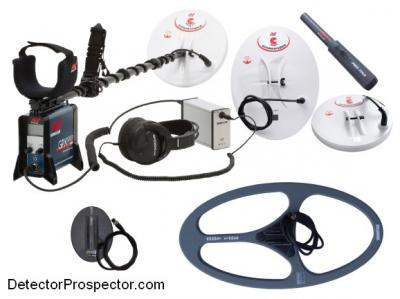
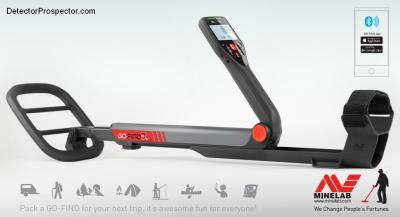
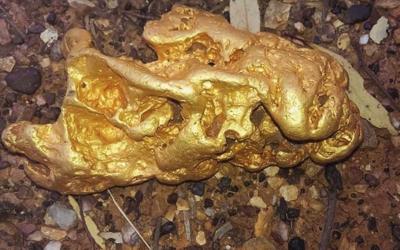
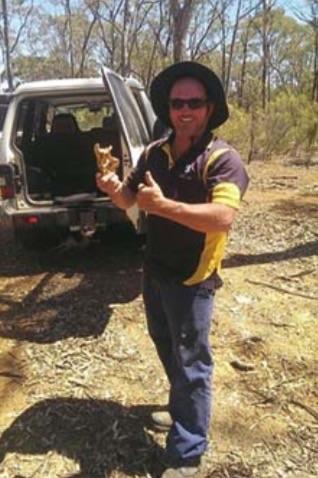
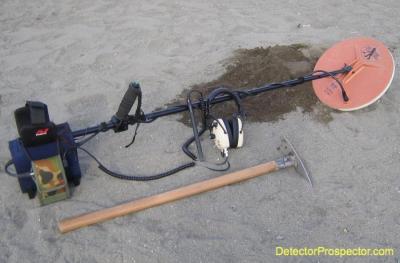
A Very Hot Hunt
in Detector Prospector Forum
Posted
Yeah, I will give details shortly (doing yard work) but tell me first what you consider "wide open" on the 4500.